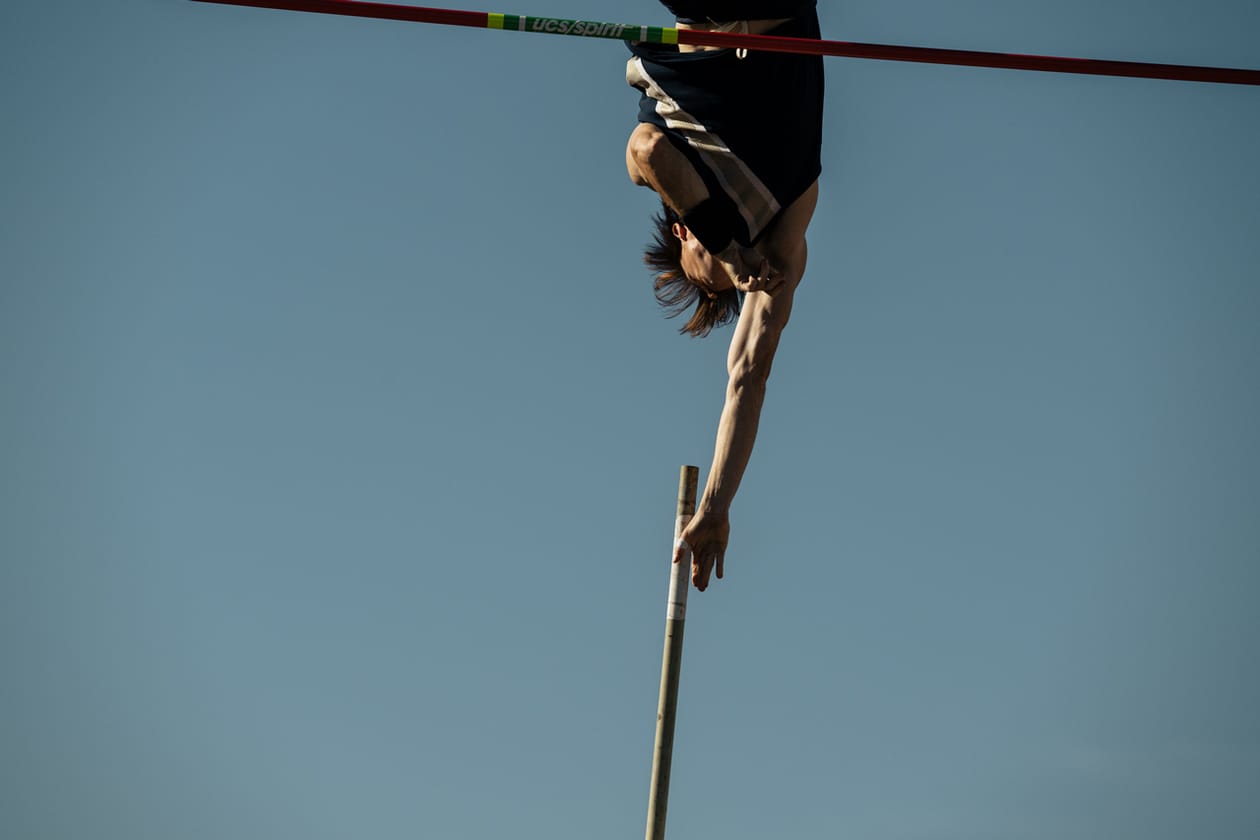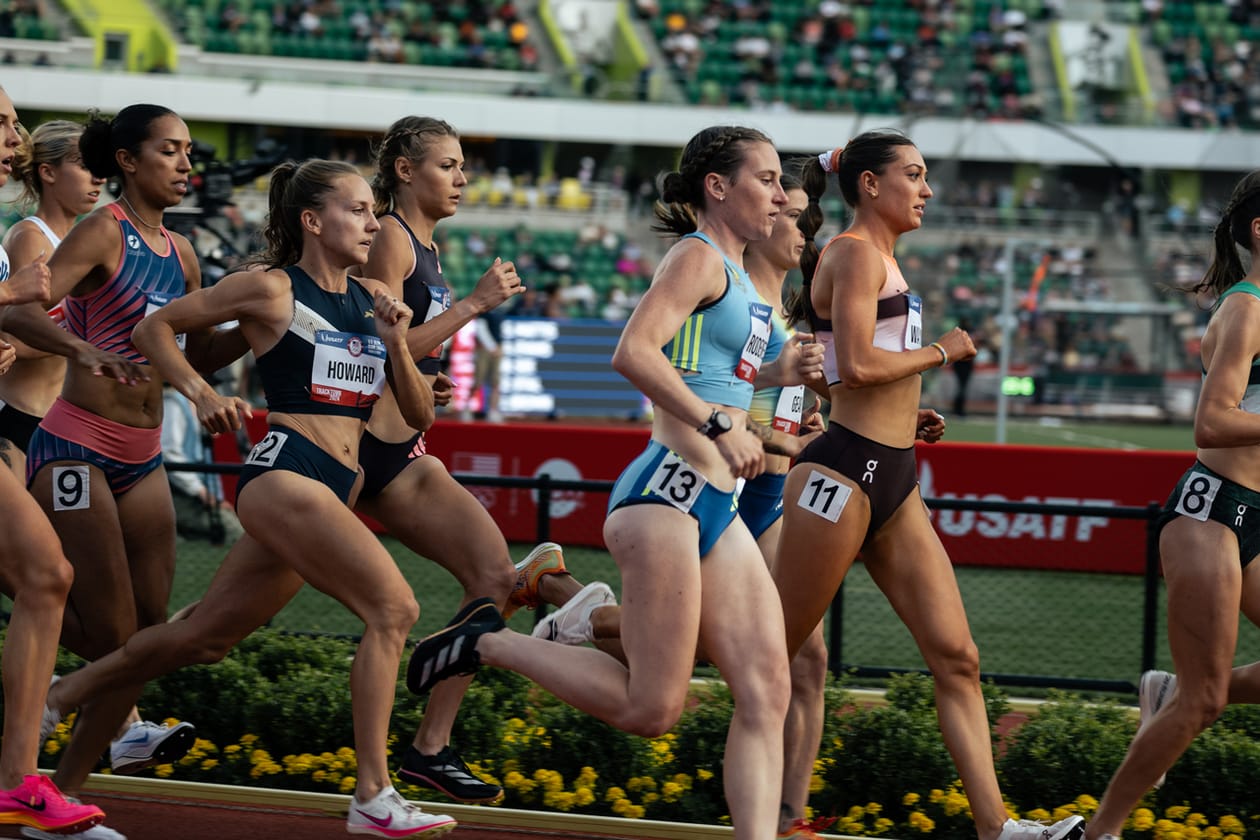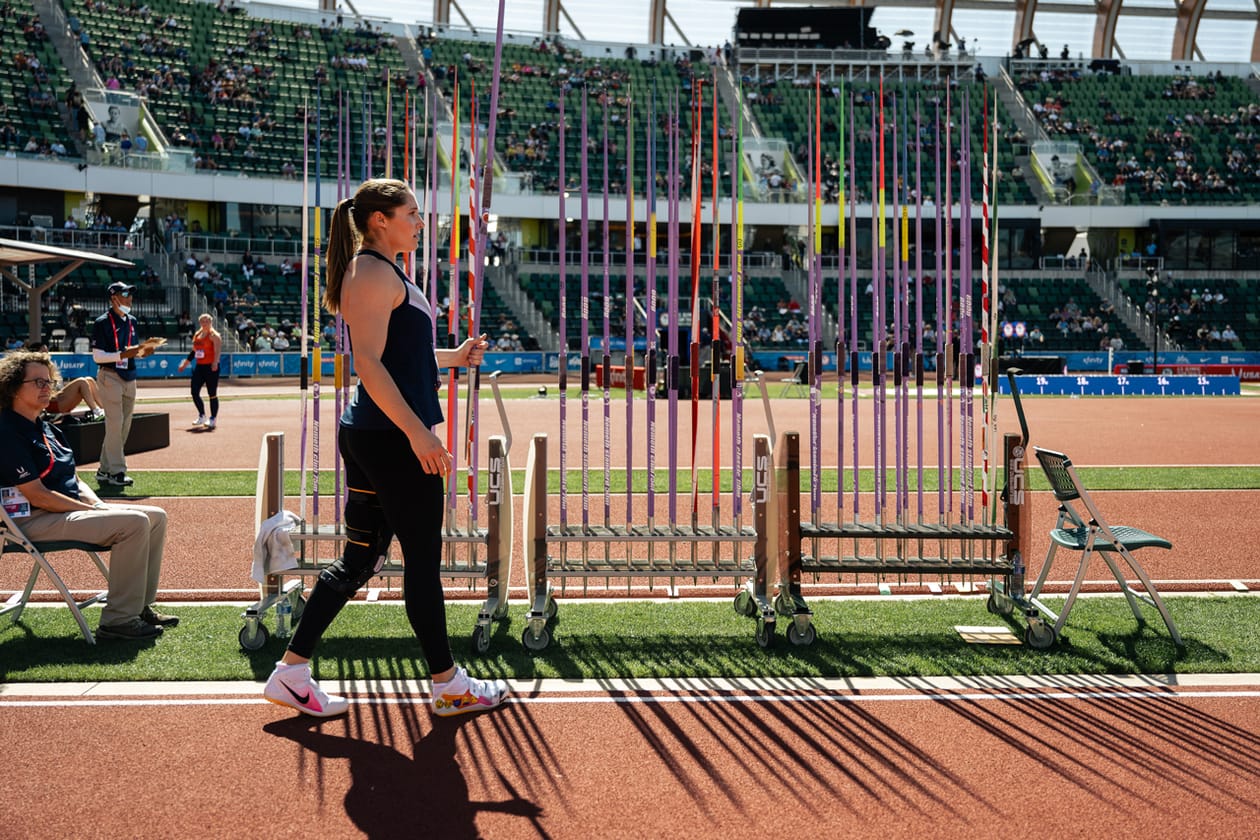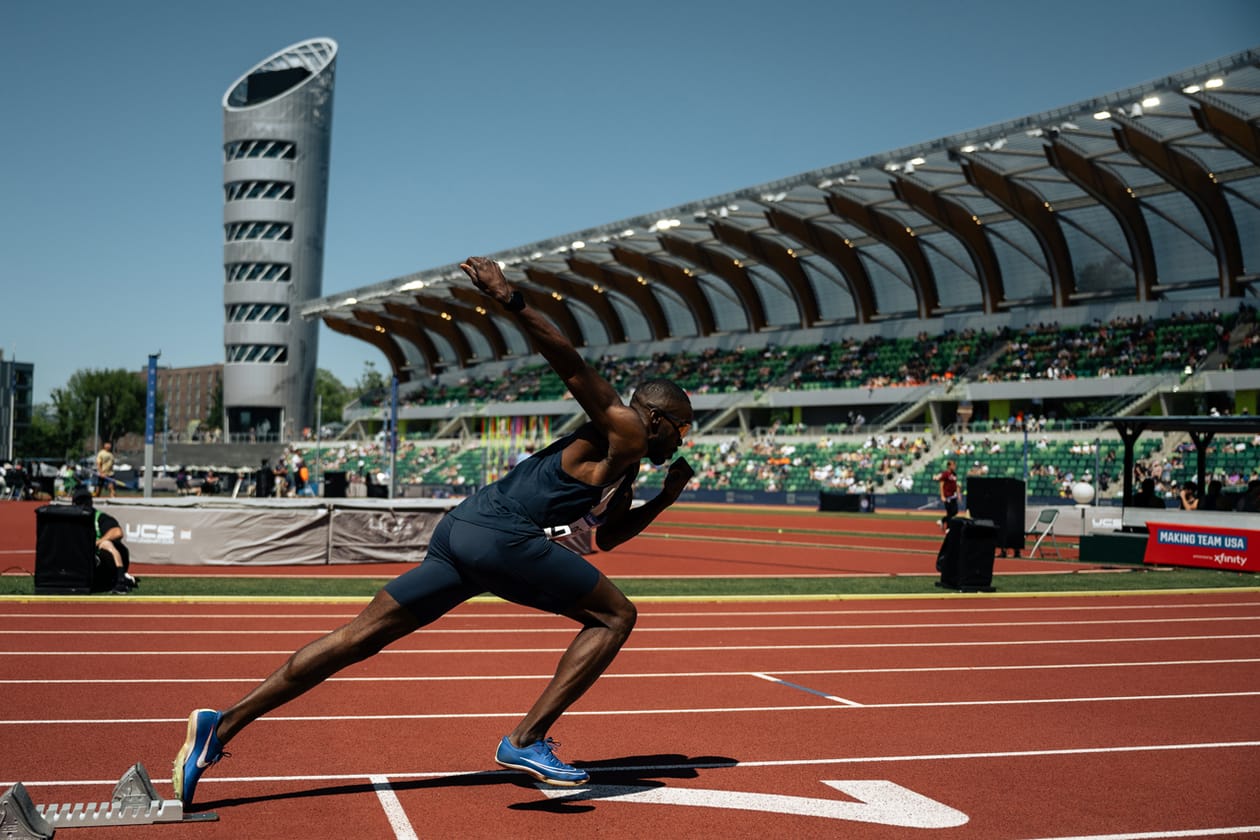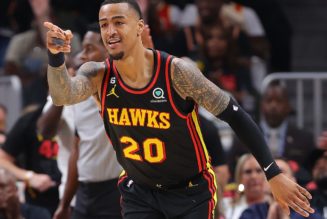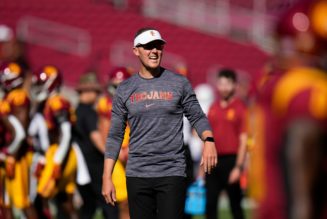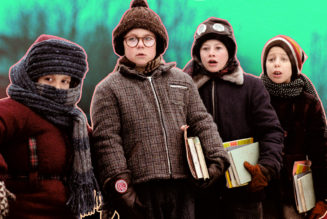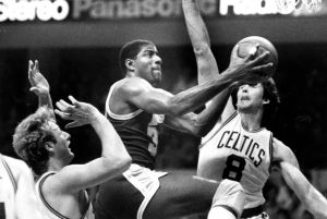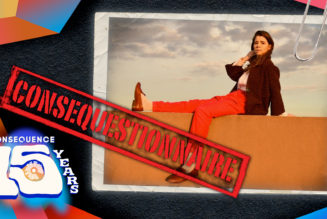You are reading your free article for this month. Login or sign up for a free account now for unlimited reading.
Curtis Thompson stood on an expanse of grass at the famed Hayward Field in Eugene, Oregon. He took a deep breath before surging forward and using his body as a kinetic chain to fling the spear in his hand.
Thompson is one of 43 track and field athletes who repped Tracksmith at the Olympic Track & Field Trials, a 10-day meet that encompasses over 20 events. The javelin thrower was also the first of the four Tracksmith competitors locked in to represent the US at the 2024 Paris Olympics, alongside hurdler Freddie Crittenden, sprinter Chris Bailey and steeplechaser Marisa Howard. In a field of 900 total competitors, the group of unsponsored athletes is backed by the Boston-based running brand’s Amateur Support Program (ASP), an initiative providing “elite amateurs” with gear, financial support to attend competitions and support on the ground.
Thompson, in fact, is already an Olympian, having represented the US in the last Games in Tokyo, along with competing in the 2016 Trials while a student at Mississippi State University. He’s currently ranked 11th globally, with three other national titles under his belt, including winning gold at the 2018 USATF Championships. Despite being a world-class athlete, Thompson has yet to derive a salary from being a professional javelin thrower.
Track and field athletes don’t have the financial security of sports like basketball or football, where players have guaranteed contracts that ensure their salary whether or not they leave the bench. In April, track and field became the first Olympic sport to pay gold medalists, but unless an athlete like Thompson comes in first place or has a sponsorship, training for the Olympics – let alone making the team – doesn’t render any monetary reward. A recent Congressional Commission found that more than a quarter of current Olympians earn less than $15,000 USD annually, whereas the costs to train for the Games averages $12,000 USD. Most of the near-200 athletes who have partaken in Tracksmith’s ASP since its founding four years ago – including those who have successfully become Olympians – have full-time or part-time jobs. Several work as coaches at colleges and high schools, while other participants’ professions run the gamut from PhD students to software engineers and nurses.
With sponsorships, an athlete will compete wearing a brand’s apparel in exchange for a small base salary — more like a stipend than a living wage — plus bonuses when they win or set records, though Thompson notes, “it can be hard to find support as a javelin thrower because most people want to sponsor sprinters or distance runners.” Events that fall into the “field” portion of “track and field” – like the javelin, hammer or discus throw – are considered less marketable, along with niche running disciplines like the steeplechase or racewalk.
Upon graduating college in 2018, Thompson moved to Alabama to join a small group of fellow former college javelin throwers who were attempting to qualify for the 2021 Trials. His post-grad training was largely funded through his part-time job as a track and field coach at a local high school, though it was difficult to make it to events held abroad, owing to the cost and his lack of an agent who could help him enter in the more highly-sought-after competitions.
Following his Olympic debut in Tokyo, now with secured agent representation but still no sponsorship deal on the table, Thompson applied to ASP in 2022 and met with the program’s newly-minted director, Nick Willis.
Since Willis – a two-time Olympic medalist in the 1500m – took the reins, ASP has become a burgeoning athlete incubator, a vast evolution from the program’s start in 2020 when it simply offered free gear to any athlete who participated in the Olympic Marathon Trials in Atlanta.
Under Willis, ASP supports post-collegiate athletes who are pursuing competitive careers without the financial support and coaching previously provided by their universities. Tracksmith covers housing and lodging for major track and field events, such as Trials, the USATF Outdoor Championships and major marathons in the US (Boston, Chicago and New York). If a particular athlete is close to achieving a qualifying time necessary for entry into an event like the Trials, Tracksmith will support their travel to competitions within the US to give them a shot at meeting that requirement and a select few athletes in the program have also received financial support on an international level.
ASP is fueled by an optimistic concept that’s overlooked by most big-name brands: namely that not all athletes reach their full potential before or during college. Some of the most well-known runners, like Sha’Carri Richardson and Noah Lyles, are scouted as teenagers. Richardson left college after her freshman year to go pro with Nike, while Lyles was tapped by adidas during his senior year of high school.
While every sport boasts its prodigies, Willis espouses the idea that, with real support and a few more years of training, athletes who might otherwise leave the sport after college can go on to compete at some of the biggest events in track and field. In a landscape where athletes – runners and sprinters specifically – typically make their Olympic debut in their early 20s or even as teens, ASP is designed to act as a pipeline from grassroots to elite, regardless of age.
ASP-supported steeplechaser Howard will be making her Olympic debut at the age of 31 in the steeplechase, a 3000m race that prioritizes endurance over speed as participants jump over barriers and pools of water. Howard, a school nurse who lives in Boise, Idaho, has been running without a sponsor for the past seven years and attributed becoming a mom with making her stronger as an athlete.
Emily Richards, meanwhile, ran at a D3 school and competed in the 800m sprint at the Trials, marking her second attempt. “I think people are shocked that you can have that progression from D3,” she says. “But if you look at the division now, a lot more people are making that pathway after college.”
For other athletes, the goal isn’t necessarily to make an Olympic team but to simply qualify for and compete in the Trials, itself no small feat. Some countries hand-pick their Olympic athletes, often based on competitive history. The US, however, favors a more meritocratic system. At the Trials, running events consist of an initial first round, though all disciplines have a semi-final and final. Competitors are timed – or in the case of jumps and throws, measured – and weeded out. The top three finishers from each event are welcomed onto the team, provided they meet the required world ranking or execute a performance at the Trials that meets certain criteria, a number dubbed the “Olympic standard.”
38-year-old Kara Winger came out of a two-year retirement to compete in the javelin throw for the sheer challenge of it. Although Winger placed second in the event, she had lost her world ranking during retirement and her throw was a foot shorter than the Olympic standard, leaving her off of the team. Another ASP athlete, hammer thrower Justin Stafford, similarly placed third but was shy of the Olympic standard and the necessary ranking. Other athletes may have never even stepped onto the field with their chances of making the team so slim, but the amateur athlete is defined not solely by their performance but rather their commitment to the process even when the cards are stacked against them. The journey, not the end result, is often the competitive challenge they crave.
Steeplechaser Katie Thronson, who was aiming to make it into the Trials finals, recalls that she had watched the meet at Hayward Field when she was 12, making her entry into the competition a “full circle moment.” After competing in a graduate season at Notre Dame while doing a master’s degree, Thronson stayed at the school to complete an internship and train with her coach leading up to the Trials.
“It was a big change to go from having such a good competitive team and constantly being surrounded by that support when I was competing at races through school to doing it on my own,” Thronson says. “I joined ASP because I needed to feel like people were behind me.”
Several of the program’s runners and sprinters originally had corporate sponsorships and sought out ASP after those deals ended. After college, Richards inked a contract with HOKA and began eyeing ASP as that contract ran its course, eventually applying the day her deal with HOKA ended. Sprinter Elijah Hall, who also receives support from Red Bull, joined the program following the conclusion of a Nike contract in 2022.
One of the main draws of ASP for an elite amateur is that it isn’t an exclusive or binding contract. If a sponsor spots a Tracksmith athlete at a competition and wants to offer them a deal, they’re free to do so. In fact, Willis says it’s celebrated when an athlete can use ASP as a foundation and graduates to a professional contract. And, no matter who their personal sponsor, all Olympic athletes will wear Nike kits in Paris, as the brand is the official uniform partner of Team USA.
Regardless of the label on their kit and the sheer nature of track and field as an individual sport, ASP athletes idiosyncratically form a team of their own, as do all amateur athletes who show up to compete year after year. There’s a unique respect within the sport for those fueled by their unwavering commitment to their disciplines, and a deep-rooted sense of community born from the experience of training as an amateur athlete.
As Thompson’s javelin pierced the air and plunged into the field, officials scurried to mark where it landed, and the word returned: it was three feet further than any other throw. Thompson had secured a gold medal at the US Track & Field Olympic trials, and with it, a spot on the 2024 US Olympic team.
How he’ll do in Paris has yet to be seen, but for the crowd of diehard track fans and his fellow ASP athletes, Thompson has already exercised far more than his ability to throw the javelin. He’s proven that with grit and drive, the so-called amateur athlete can defy all odds.


